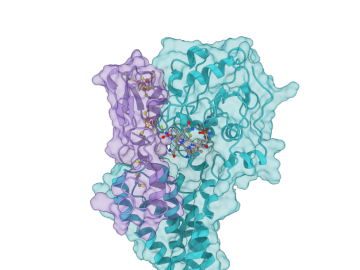
Filter News
Area of Research
News Type
News Topics
- (-) Advanced Reactors (7)
- (-) Biomedical (16)
- (-) Environment (16)
- (-) Microscopy (6)
- (-) Quantum Science (12)
- 3-D Printing/Advanced Manufacturing (24)
- Artificial Intelligence (7)
- Big Data (6)
- Bioenergy (13)
- Biology (3)
- Biotechnology (2)
- Buildings (1)
- Chemical Sciences (5)
- Clean Water (2)
- Composites (1)
- Computer Science (31)
- Coronavirus (22)
- Critical Materials (2)
- Cybersecurity (3)
- Energy Storage (14)
- Exascale Computing (3)
- Fusion (10)
- Grid (4)
- High-Performance Computing (3)
- Isotopes (7)
- Machine Learning (5)
- Materials (2)
- Materials Science (28)
- Mathematics (2)
- Mercury (1)
- Molten Salt (1)
- Nanotechnology (14)
- National Security (2)
- Neutron Science (29)
- Nuclear Energy (24)
- Physics (13)
- Polymers (5)
- Security (3)
- Space Exploration (2)
- Summit (14)
- Transportation (10)
Media Contacts

New capabilities and equipment recently installed at the Department of Energy’s Oak Ridge National Laboratory are bringing a creek right into the lab to advance understanding of mercury pollution and accelerate solutions.

The Transformational Challenge Reactor, or TCR, a microreactor built using 3D printing and other new advanced technologies, could be operational by 2024.

Popular wisdom holds tall, fast-growing trees are best for biomass, but new research by two U.S. Department of Energy national laboratories reveals that is only part of the equation.

Four research teams from the Department of Energy’s Oak Ridge National Laboratory and their technologies have received 2020 R&D 100 Awards.

Scientists at ORNL and the University of Nebraska have developed an easier way to generate electrons for nanoscale imaging and sensing, providing a useful new tool for material science, bioimaging and fundamental quantum research.

Researchers at ORNL used quantum optics to advance state-of-the-art microscopy and illuminate a path to detecting material properties with greater sensitivity than is possible with traditional tools.

Systems biologist Paul Abraham uses his fascination with proteins, the molecular machines of nature, to explore new ways to engineer more productive ecosystems and hardier bioenergy crops.

The Department of Energy has selected Oak Ridge National Laboratory to lead a collaboration charged with developing quantum technologies that will usher in a new era of innovation.

A team led by ORNL created a computational model of the proteins responsible for the transformation of mercury to toxic methylmercury, marking a step forward in understanding how the reaction occurs and how mercury cycles through the environment.

As CASL ends and transitions to VERA Users Group, ORNL looks at the history of the program and its impact on the nuclear industry.


